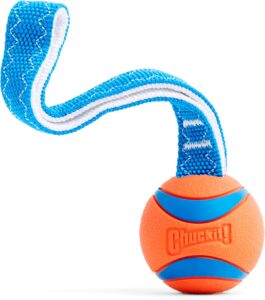
Crate training can be an invaluable tool for dog owners, serving as a foundation for a well-adjusted and content canine companion. When executed correctly, crate training not only offers your dog a personal sanctuary but also assists in house training, prevents destructive behavior, and eases travel anxiety. This comprehensive guide will walk you through effective crate training tips to ensure your dog is happy and comfortable.
Understanding the Benefits of Crate Training
Before diving into the training techniques, it’s important to understand why crate training is beneficial. A crate mimics a den-like environment, which can provide a sense of security for dogs. It helps manage and limit your dog’s access to the rest of the house, aiding in house training by utilizing their natural instinct to avoid soiling their sleeping area. Moreover, it can be an important tool for managing behavior and preventing unwanted habits like chewing or barking.
Choosing the Right Crate
The first step in crate training is selecting the appropriate crate for your dog. The crate should be large enough for your dog to stand, turn around, and lie down comfortably, but not so large that they can designate a corner for elimination. Crates come in various materials, including wire, plastic, and fabric, each offering unique benefits. Wire crates provide more ventilation and visibility, while plastic crates offer a more enclosed, den-like atmosphere. Fabric crates are lightweight and portable, suitable for travel or temporary use.
Introducing the Crate to Your Dog
Introducing your dog to the crate in a positive and gradual manner is key. Start by placing the crate in an area of the house where the family spends a lot of time. Make the crate inviting by placing a soft blanket or bed inside and leaving the door open. Encourage your dog to explore the crate on their own by placing treats or toys inside. Allow them to enter and exit freely without any pressure.
Creating Positive Associations
To ensure your dog associates the crate with positive experiences, feed them meals inside or near the crate. Start by placing the food bowl just inside the door, gradually moving it further inside with each meal. Use praise and treats to reward your dog for entering the crate willingly. Patience is crucial; never force your dog inside as this can create fear or anxiety.
Establishing a Routine
Dogs thrive on routine, and establishing a consistent crate schedule can aid in their training. Begin by crating your dog for short periods while you are at home, gradually increasing the duration as they become more comfortable. Make sure to incorporate crate time into their daily routine, such as during meal times, naps, and bedtime. Remember to give your dog ample exercise and bathroom breaks to prevent restlessness while in the crate.
Positive Reinforcement
Positive reinforcement is a powerful tool in crate training. Use treats, praise, and attention to reward desired behavior, such as entering the crate or remaining calm inside. Avoid using the crate as a form of punishment, as this can create negative associations and hinder the training process.
Managing Separation Anxiety
Some dogs may experience separation anxiety when left alone in the crate. To help alleviate this, start by leaving the room for short periods while your dog is crated, gradually increasing the duration over time. Provide them with a safe chew toy or an interactive treat dispenser to keep them occupied. Consistency and patience are key to helping your dog overcome separation anxiety.
Gradual Desensitization
Gradual desensitization is crucial for dogs with separation anxiety. Begin by practicing short departures, such as stepping outside for a few minutes, and gradually extend the time as your dog becomes more comfortable. Always return calmly to avoid creating anticipation. Over time, your dog will learn that your absence is temporary and not a cause for distress.
Travel and Crate Training
Crate training is not only beneficial at home but also during travel. A crate provides a familiar and secure environment for your dog, reducing their stress during car rides or flights. Before traveling, ensure your dog is comfortable with the crate by practicing at home. Gradually introduce them to car rides in the crate, starting with short trips and gradually increasing the duration.
Safety Tips for Traveling with a Crate
When traveling with your dog in a crate, ensure it is properly secured to prevent movement. In cars, secure the crate with a seatbelt or place it on a stable surface. For air travel, check with the airline for specific crate requirements and ensure your dog is accustomed to the crate well in advance of the trip.
Handling Setbacks
Setbacks are a natural part of the training process, and it’s important to handle them with patience and understanding. If your dog shows reluctance or anxiety, take a step back and reassess your approach. Identify any potential triggers or negative associations and address them accordingly. Reintroduce crate training gradually, using positive reinforcement to rebuild trust and confidence.
Conclusion
Crate training, when done correctly, can provide a safe and comfortable environment for your dog, promoting their overall well-being and happiness. By choosing the right crate, introducing it positively, and using positive reinforcement, you can help your dog view the crate as a cozy retreat. Remember to be patient, consistent, and understanding throughout the process, and your dog will soon enjoy the benefits of a well-executed crate training regimen.
#ChatGPT assisted in the creation of this article.








